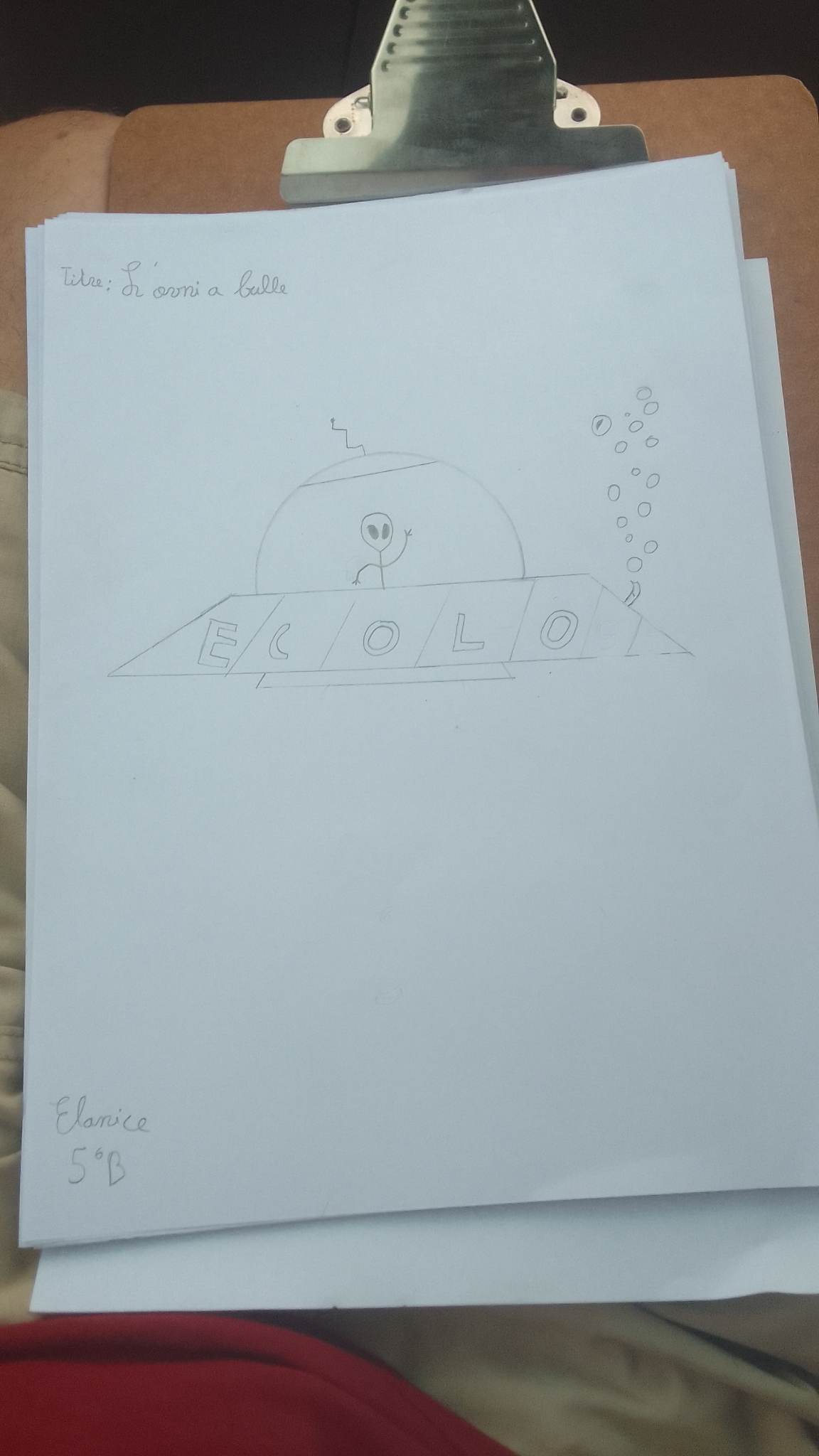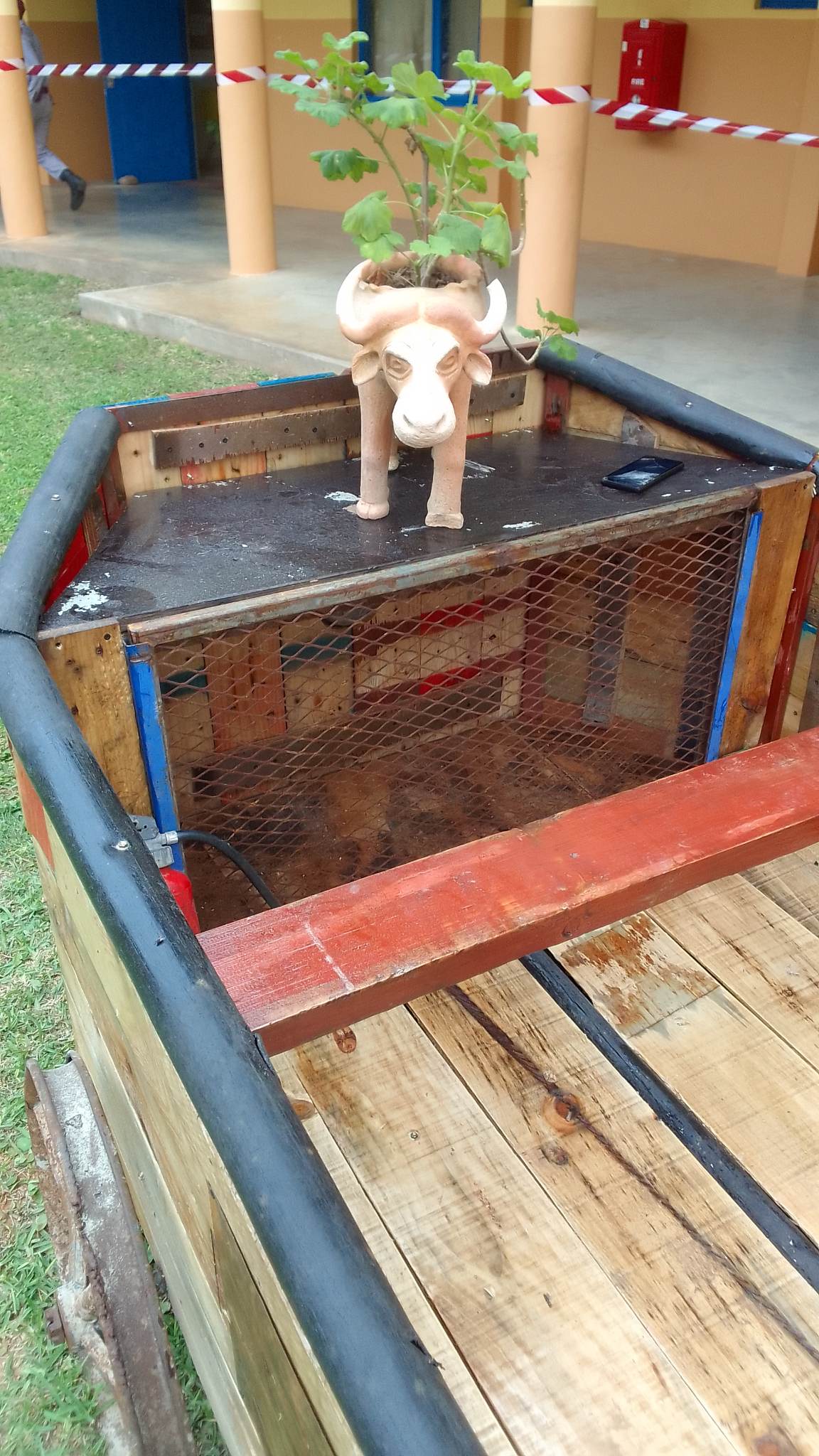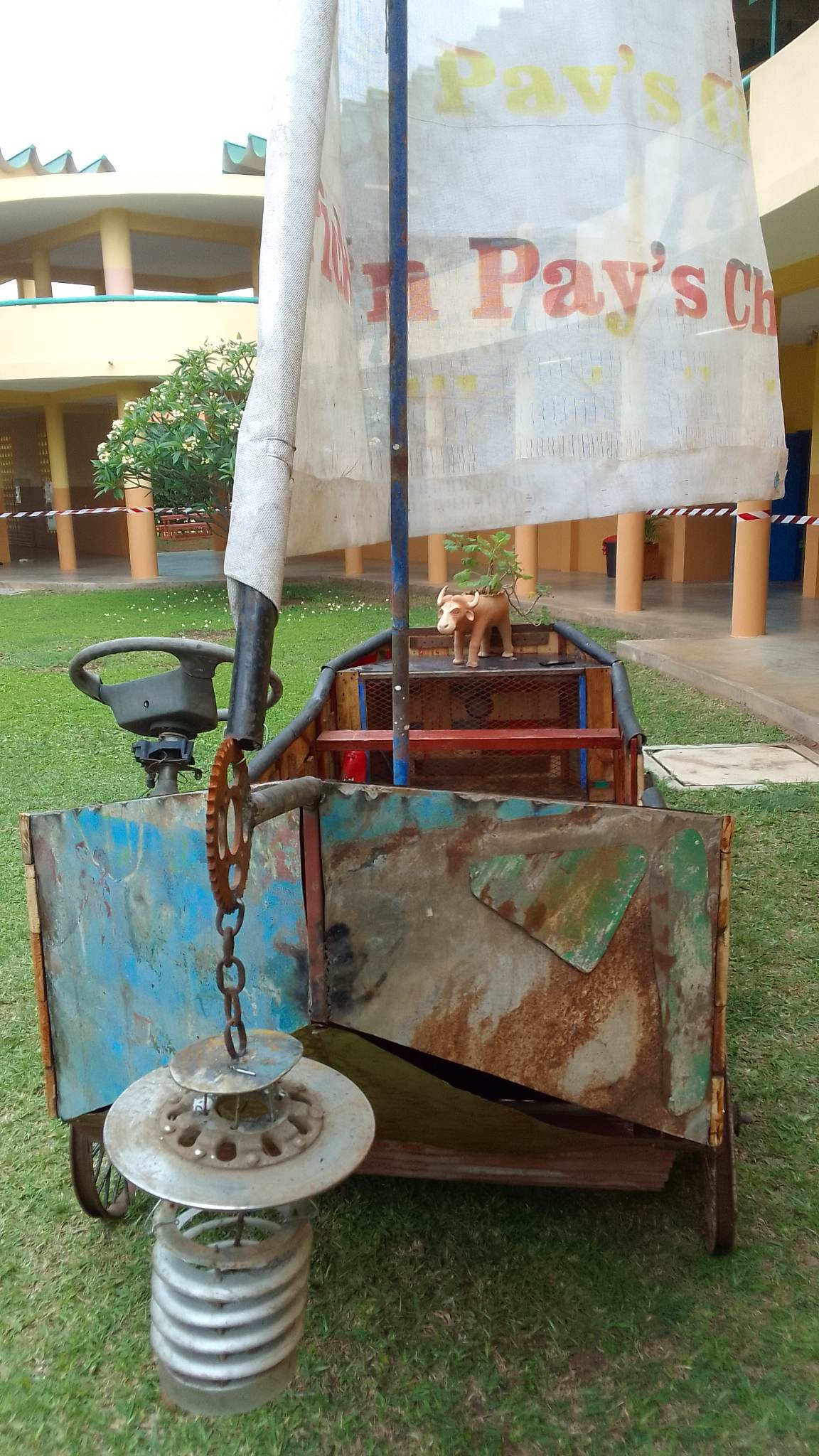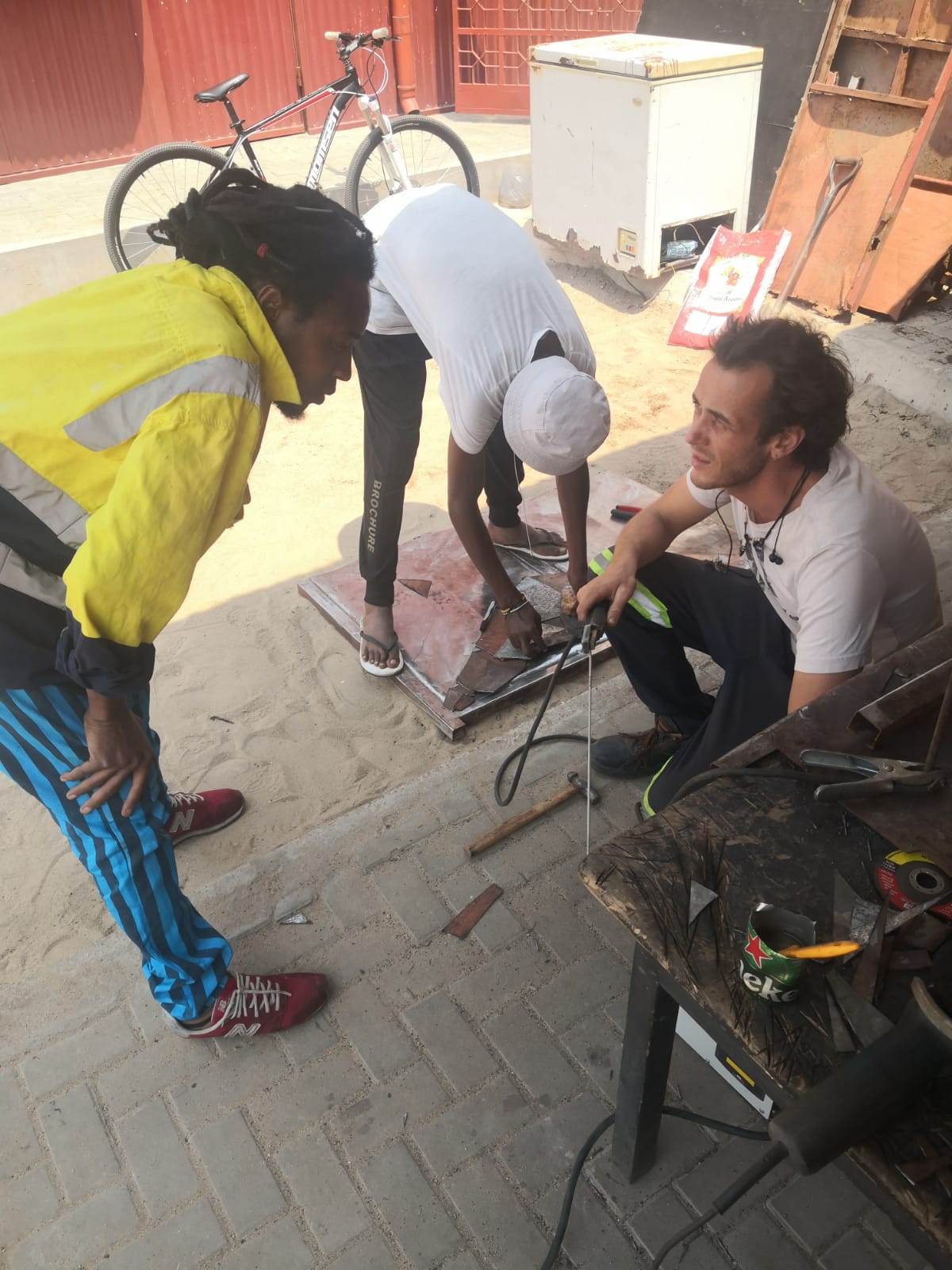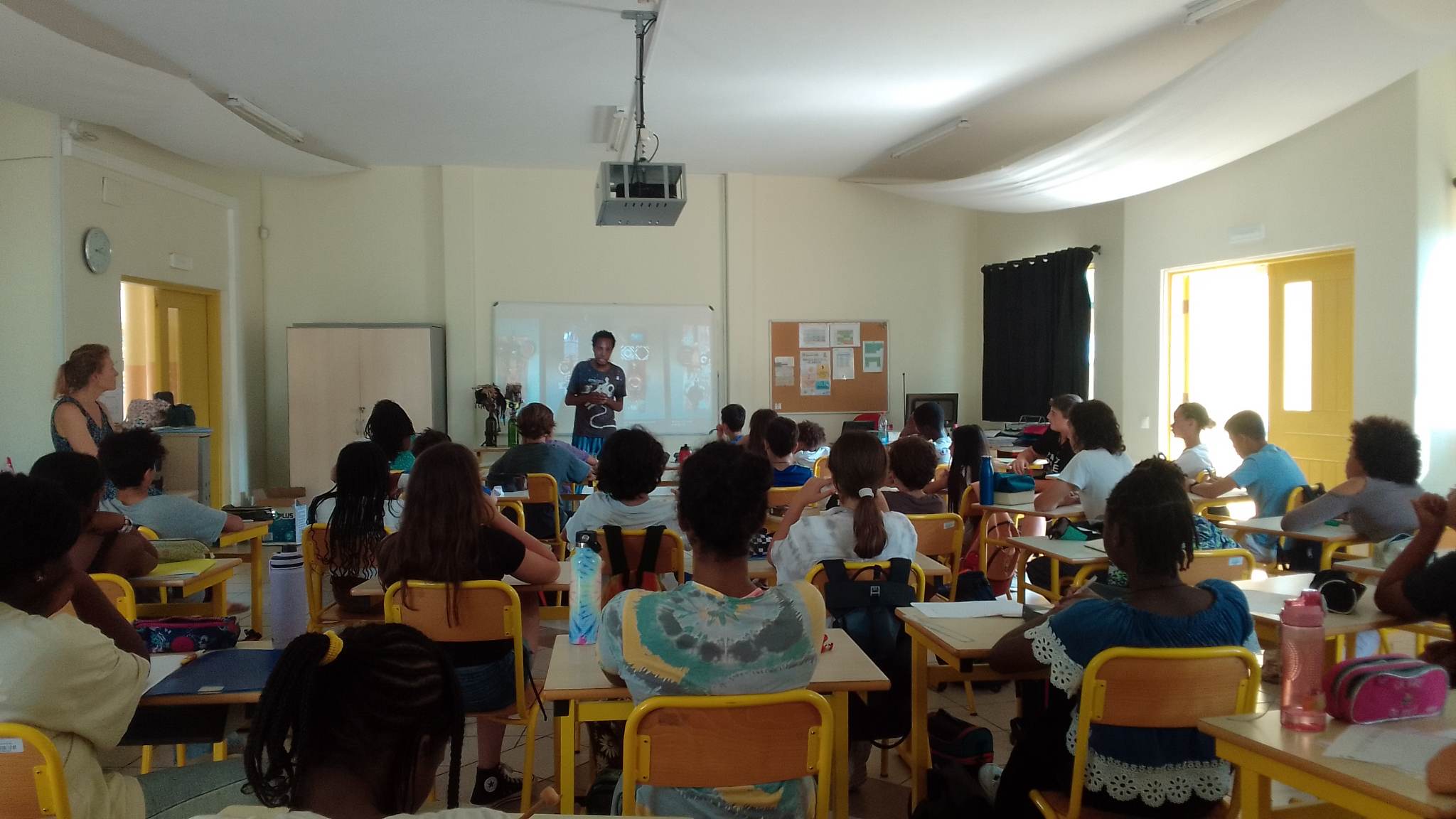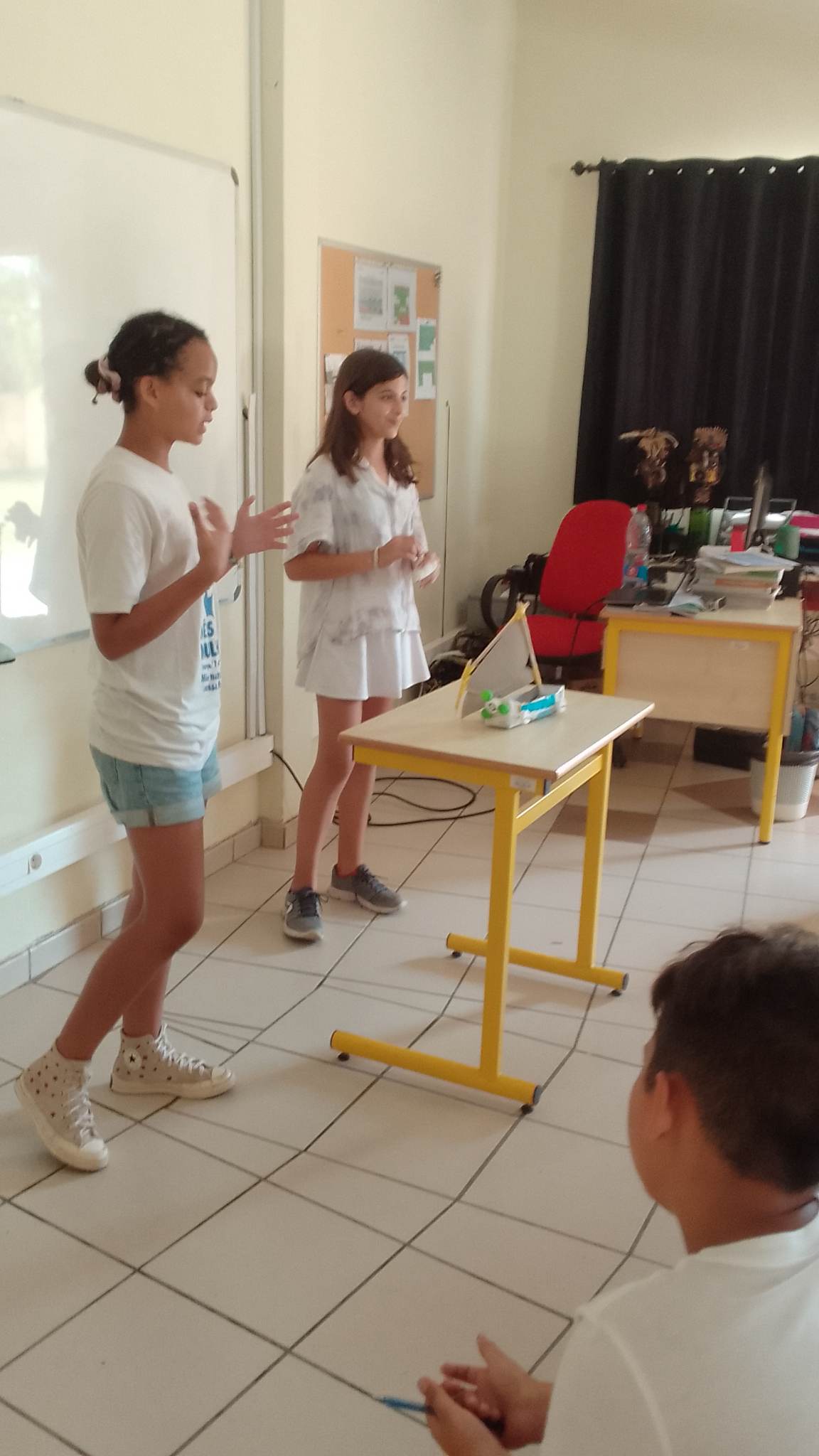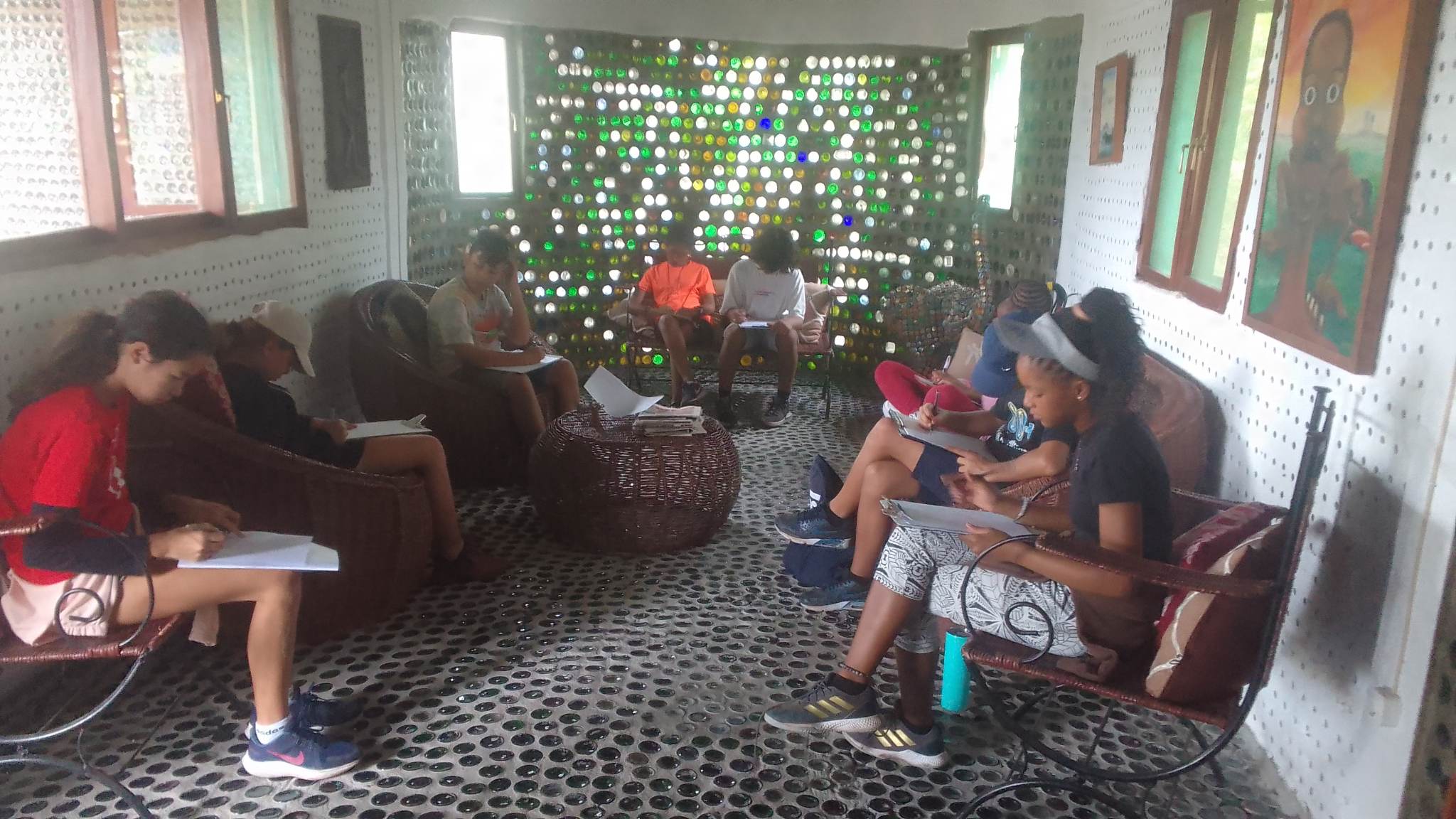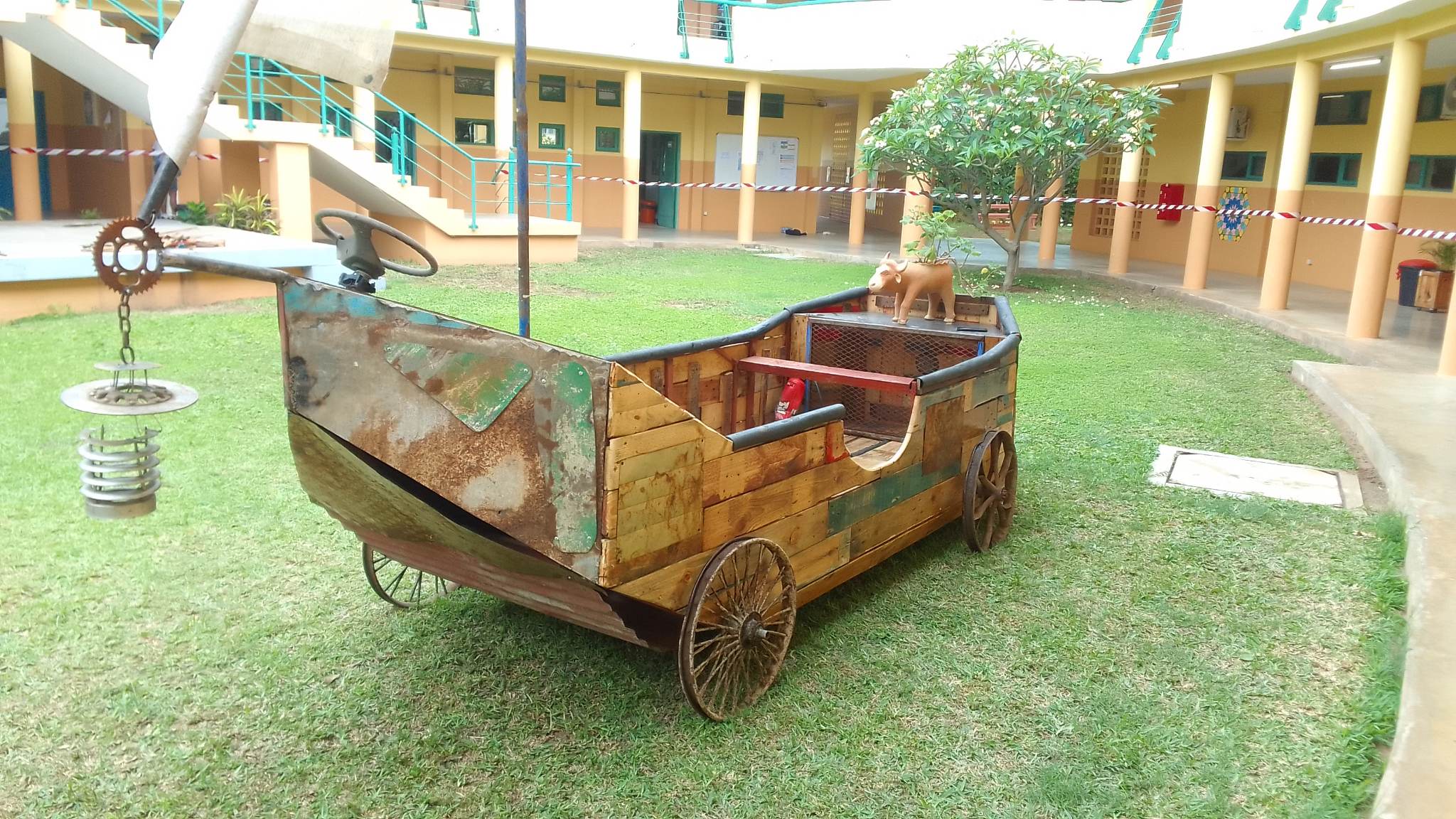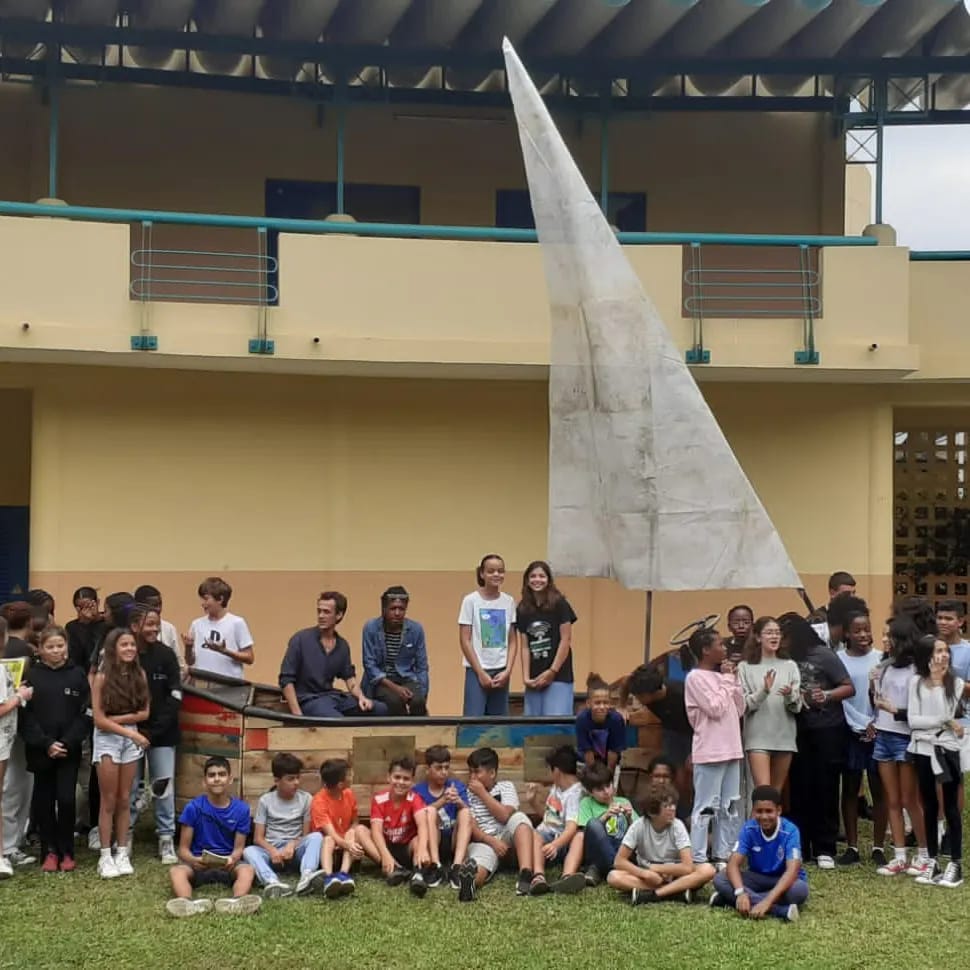
“The Dohw” French School - Maputo, Mozambique
Project “Imaginary Vehicle”
This project is a foray into realizing the unsustainability of our consumption of goods through the building of an imaginary vehicle. This vessel is conceptualized by children and constructed by apprentices, artists and craftsmen using only recovered materials The project is international and meant to be replicated worldwide in order to empower youth concerned about their future.
This ship is built following three steps.
Chapter 1 : Imagination and creation with kids in school
Children aged 6 to 12 are the first to contribute to the project. We met regularly at school with the teacher present. The steps taken are as follows : imagination, drawing and small-scale modeling of the vessel. Mostly recovered materials used i.e. wood, cloth, paper, plants, … .
Chapter 2 : Building the vessel with apprentices
The vessel conceptualized by the children is then built in collaboration with local artists, craftsmen and apprentices on a two-week schedule. These apprentices will build the world of tomorrow and may be enrolled to work for construction in the future, one of the most polluting industries. Hence the importance of sensitizing them to the value of minimum waste and recovered materials. I also want to introduce them to low-tech devices and incorporate some into the ship.
*Low tech : affordable technology with low environmental impact
Chapter 3 : Exhibition
Exhibition of the vessel, small scale models and drawings with the young creators present. Panel with presentation of the project and its artistic approach with details of the various steps of creation.
![]()
![]()
![]()
![]()
![]()
![]()
![]()
![]()
![]()
![]()
![]()
![]()
![]()
This project is a foray into realizing the unsustainability of our consumption of goods through the building of an imaginary vehicle. This vessel is conceptualized by children and constructed by apprentices, artists and craftsmen using only recovered materials The project is international and meant to be replicated worldwide in order to empower youth concerned about their future.
This ship is built following three steps.
Chapter 1 : Imagination and creation with kids in school
Children aged 6 to 12 are the first to contribute to the project. We met regularly at school with the teacher present. The steps taken are as follows : imagination, drawing and small-scale modeling of the vessel. Mostly recovered materials used i.e. wood, cloth, paper, plants, … .
Chapter 2 : Building the vessel with apprentices
The vessel conceptualized by the children is then built in collaboration with local artists, craftsmen and apprentices on a two-week schedule. These apprentices will build the world of tomorrow and may be enrolled to work for construction in the future, one of the most polluting industries. Hence the importance of sensitizing them to the value of minimum waste and recovered materials. I also want to introduce them to low-tech devices and incorporate some into the ship.
*Low tech : affordable technology with low environmental impact
Chapter 3 : Exhibition
Exhibition of the vessel, small scale models and drawings with the young creators present. Panel with presentation of the project and its artistic approach with details of the various steps of creation.
